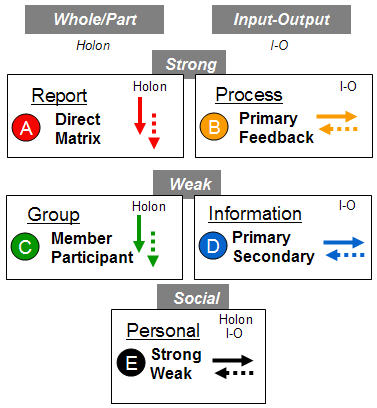* Every node has one and only one “main parent” whole/part holon link embedded in its definition. We typically code it “A1,” but it can be any link type so long as it follows the “one-node-one-link rule”
|
Ten Organization Link Types
